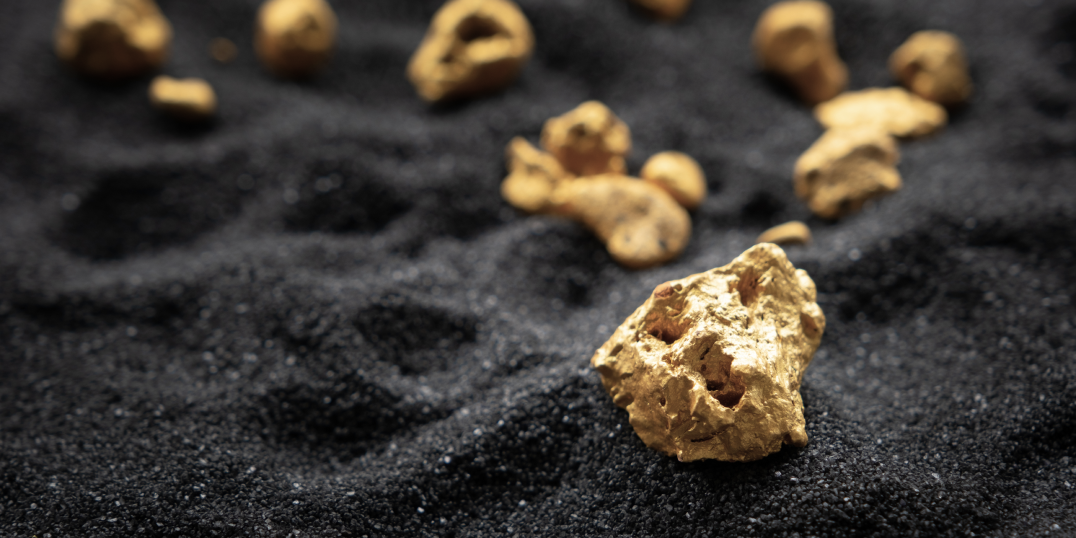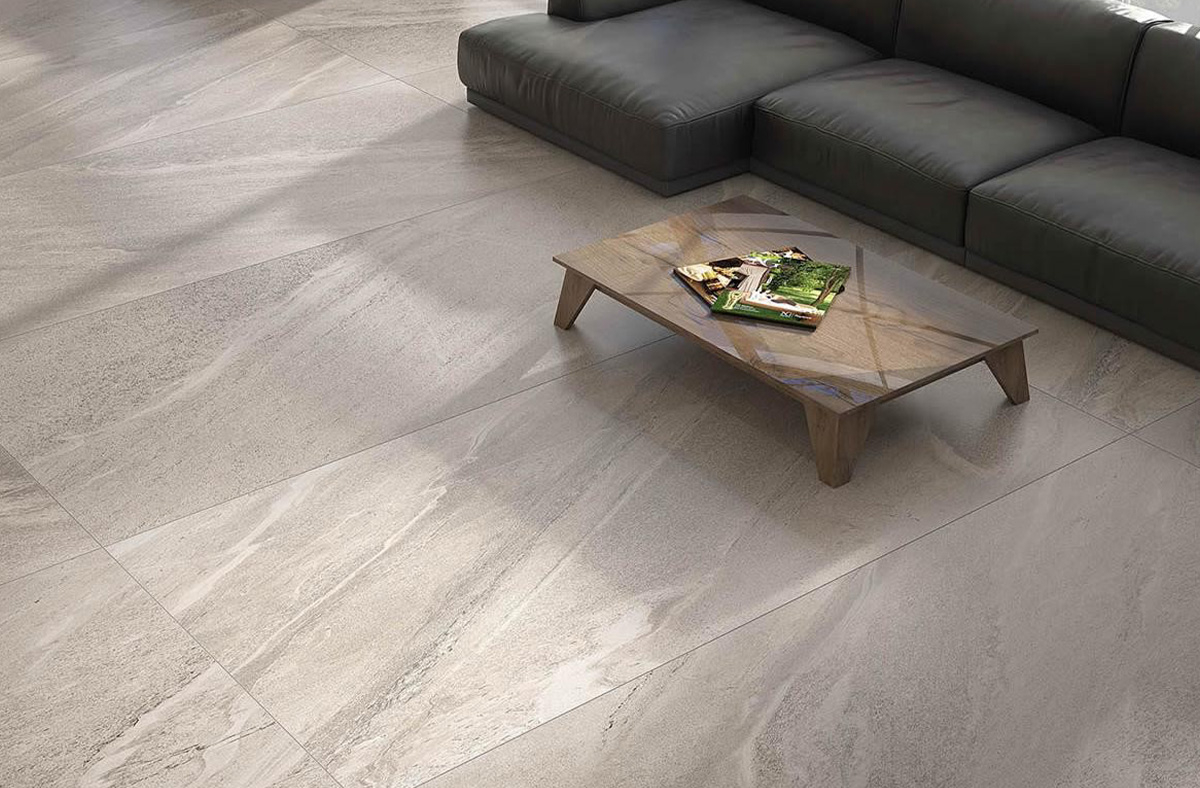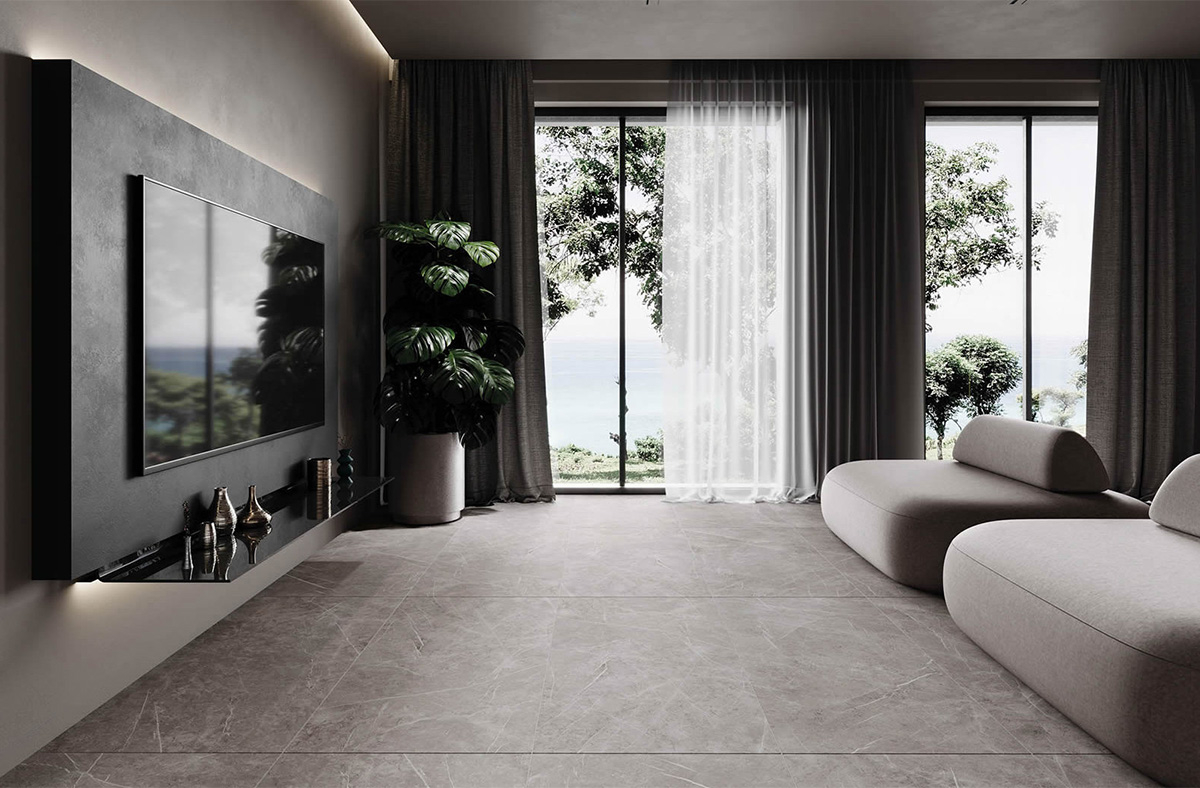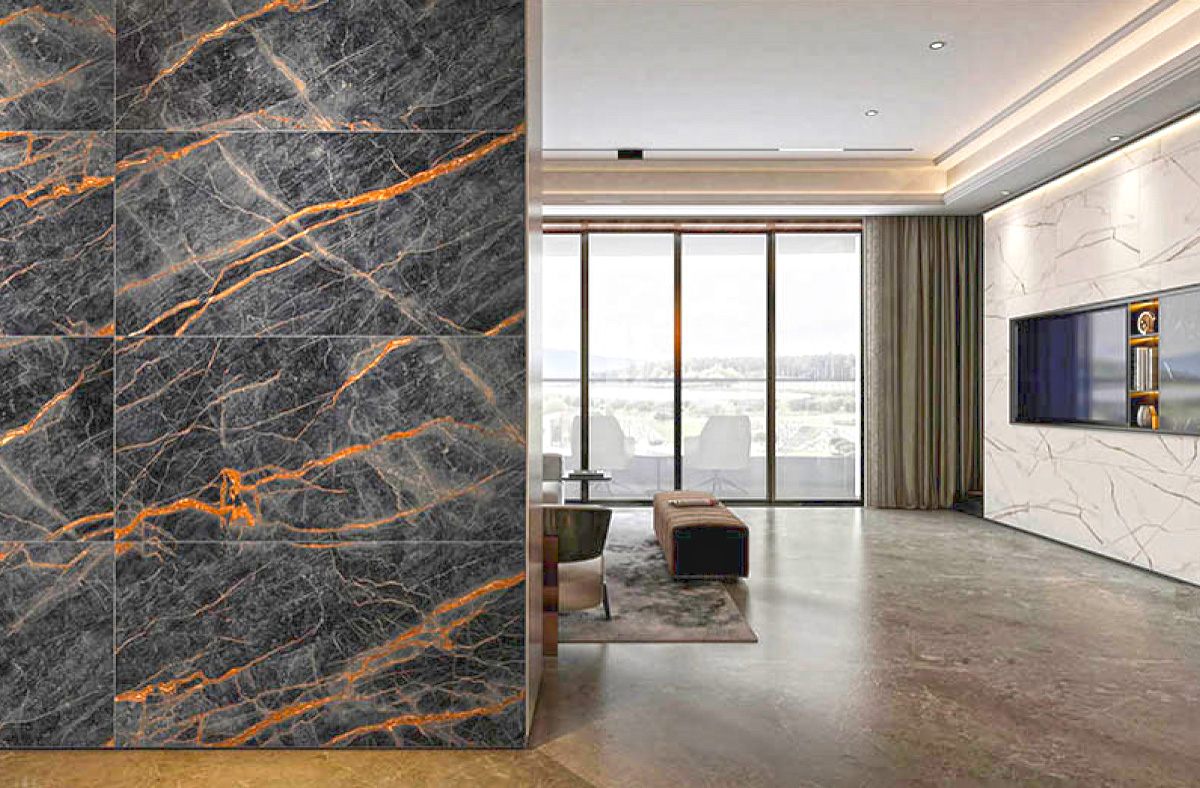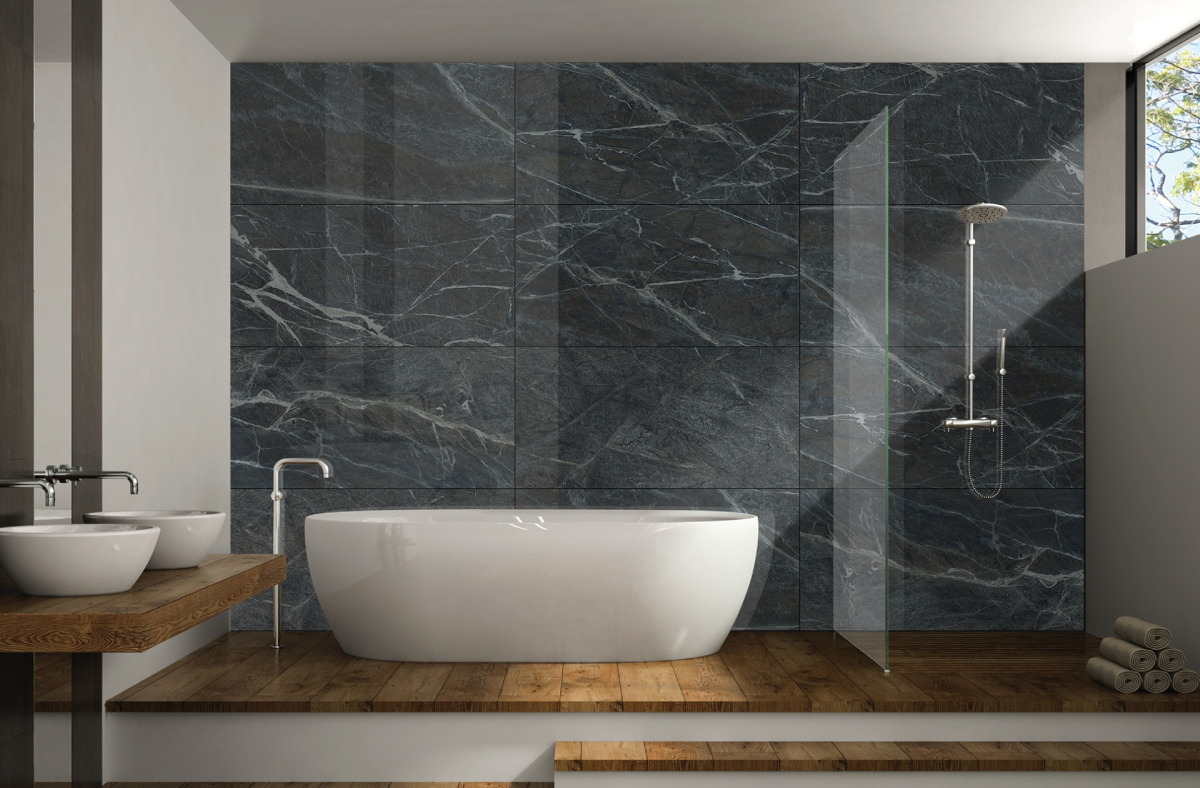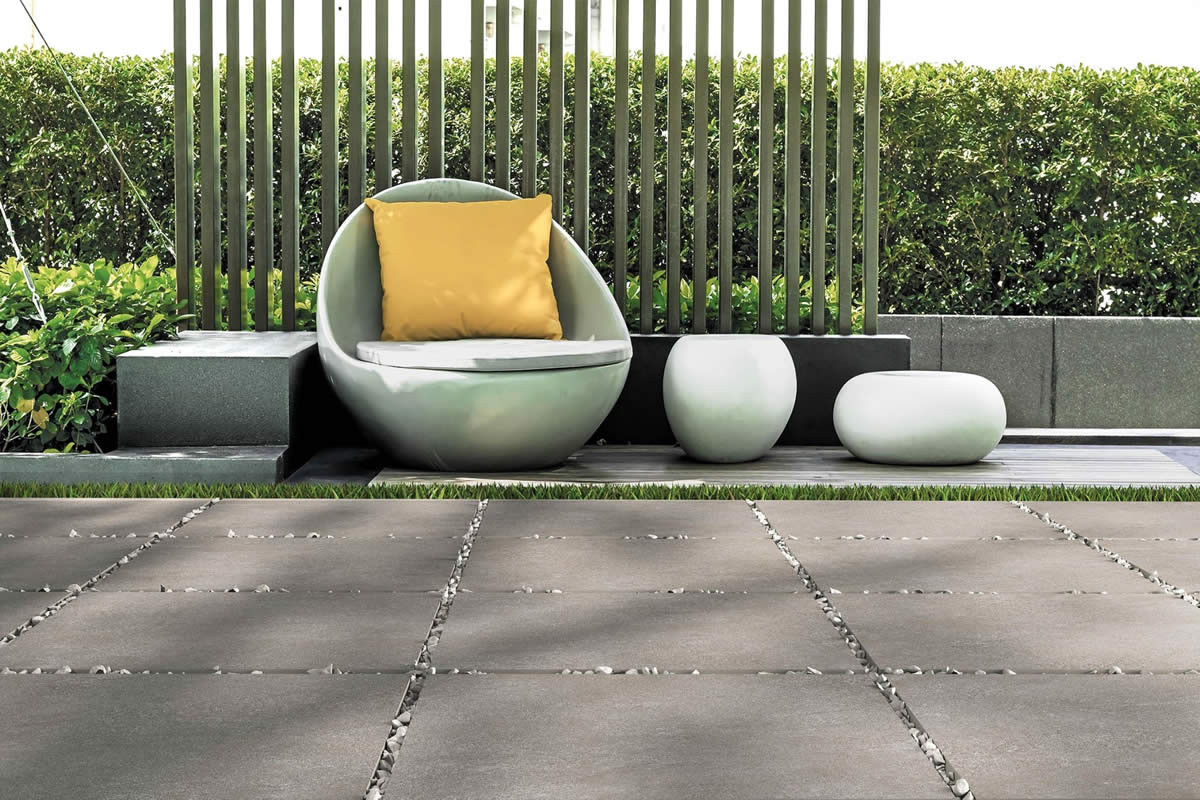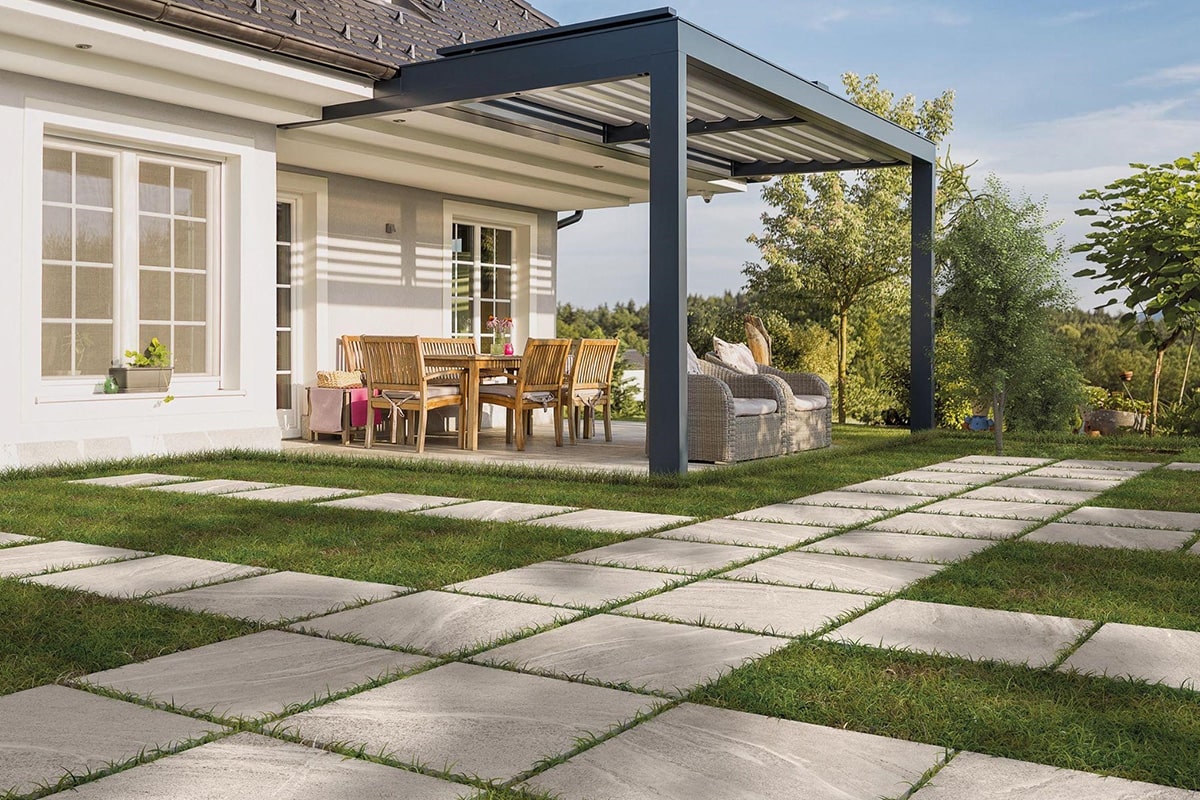Natural gold is thought to be the first metal used by mankind. Its imperishability, brilliance and scarcity have caused it to attract attention in every period. The transition element with atomic number Z=79, atomic weight M=196,967, and symbol Au is in the BI column of the elements chart like copper and silver.
Cyanidation has been used to produce gold and silver from ores for nearly 100 years. In recent years, as a result of the development of new processes that make it more economical and efficient, this method has become the only option in today's mining, especially in the evaluation of low-grade deposits containing small grain size gold.
In general, it covers the processes of dissolution of gold and silver in the ore as anionic cyanide complexes and their extraction (leaching) and recovery from the aqueous phase. In determining the processes to be applied for the extraction of dissolved gold and silver into the aqueous phase, the reserve and grade of the ore and its structural properties such as mineralogical, permeability and diffusion are taken into account. There are mainly two extraction (leaching) methods:
- Batch extraction
- Stir extraction
Heap leaching is applied directly to gold ores that do not cause problems in terms of permeability and diffusion, while higher grade ores are subjected to stirred leaching in the tank following ore preparation pre-treatments such as crushing and grinding. Provided that the bed formation structure is suitable, the In Situ Leaching process provides a solution for the utilization of very low grade ores, albeit with low efficiency.
Depending on the gold - silver concentrations and dissolution kinetics, the recovery of gold and silver extracted from the solid phase to the liquid phase as a result of cyanidation takes place after pre-enrichment by surface adsorption and desorption processes on activated carbon such as CIP (Carbon In Pulp), CIL (Carbon In Leach) and CIC (Carbon In Column) or directly by precipitation with zinc dust or by electrolysis (electrowinning) and smelting. The resulting ingot products are purified in refining plants.
Gold is widespread in nature; however, due to the very low percentages, there are very few areas suitable for efficient exploitation. The rate of gold in seawater varies between 1-10 mg per ton of water, depending on the region. Gold deposits are divided into two categories: Primary deposits, secondary deposits. Primary deposits generally consist of quartz-rich rocks, which contain silver and gold tellurides (silvanite, cadaverite, crennerite, petzite, etc.) as well as various sulfides (pyrite, blend, stibite, galena, etc.). Secondary deposits are alluvial deposits resulting from the erosion of primary deposits, and gold grains of less than 1/100 of a millimeter in size can aggregate due to their density to form masses of 25-30 kg.
More or less all the gold produced in the world is mined from quartz or schist veins and gold-bearing sands. To separate the gold, the minerals are treated mechanically or chemically. In the mechanical method, the mineral is ground to a fine powder and then washed in a mixture of water and an oily substance. In the latter method, the possibilities of exploitation of gold deposits are very diverse. During the grinding or washing of the mineral, malgamming (alloying with mercury) can be used. The resulting malgam is distilled to separate the gold. It is also possible to process with chlorine water (especially after malgamation) (chloridation). Today, the cyanidation method is usually used, where the metal is dissolved in potassium cyanide or sodium cyanide in large pools and then treated with another metal (zinc, aluminum) to precipitate the gold. In the processing of some complex gold minerals, metals that are easily oxidized can be eliminated either by differential oxidation or by the action of certain acids or vapors. To purify gold, the metal is first converted into gold chloride and this compound is separated by electrolysis; foreign metals are collected in the sludge.
Bee gold (1 000 in 1 000 000) is called "24 karat gold". Gold coins of 900 per 1 000 (exact value 0.9166) are minted in 22-carat gold. The coverage of gold deposited in central banks and supplied to jewelers is about 99.5%. Pure gold is easily forged and is therefore alloyed with other metals to increase its hardness.
The setting of gold processed in jewelry varies from country to country: 22 carat, 18 carat, 14 carat, 10 carat. Things made of gold are stamped with a stamp indicating their karat. The metals most commonly used in gold alloys are copper, platinum (rarely) and silver. Copper is found in gold coins or yellow gold; silver is found in 10% of English gold and 50% of white gold. The use of gold-silver alloys prepared according to the white gold formula in jewelry is becoming more and more widespread and has started to replace platinum, which is very expensive due to its use in industry.
Bee gold is a very dense (19 300 kg/m³) and soft metal that appears yellow due to reflection and green due to its transparency. It melts at 1 063 °C, boils at 2 600 °C under normal pressure and emits a greenish-yellow vapor. Gold is the most suitable for drawing wire (1 km of wire can be drawn from 1 g of gold) and the easiest metal to forge. 0.1 µm thick sheets can be obtained (i.e. 10 000 of these sheets need to be stacked on top of each other to reach a thickness of one millimeter).
Since gold is the least electropositive metal, its chemical activity is very low and it does not decompose naturally. It is oxidized with +I, +II (rarely) and +III to form B-substituents. Holegens form more or less the only element group directly compounded with gold. One of the important compounds of gold is gold III chloride. A colloidal solution of gold in water can be prepared by reducing one of the hydrochloric acid solutions of this compound with hydrazine, phosphorus, formic aldehyde, etc. Cassius red, for example, is a dilute tin IV oxide, which takes its color from gold particles, and is obtained by reduction of gold II chloride with tin chloride.
It is obtained by adding hydrochloric acid to a solution of gold III chloride. The effect of halogens on gold is facilitated when these substances are formed. The phenomenon explains why gold water acts on gold. Cyanide solutions, in the presence of oxygen, dissolve gold and form very stable cyanorate ions; the reaction is used in the cyanidation of minerals. Gold must be prevented from combining with mercury because they combine to form a powdery alloy (malgamma).
The use of copper in human history began in ancient times. People used copper in ornaments, weapons and handicrafts in their daily lives and as civilization progressed, the need for copper increased even more. Today, copper has become the second most widely used metal, with consumption exceeding 13 million tons. The continuous increase in demand for copper is proportional to the developments in industrialization. The role of copper in industrialization and mechanization is now unquestionably accepted.
Its high electrical and thermal conductivity makes copper an indispensable input for power plants and conductive materials. Copper has a wide range of applications in cold weather machinery and equipment, transportation vehicles and exterior coatings due to its stainless properties. In addition to these, copper has an important place in welding works, metallurgy and bronze production, and it is possible to count many more areas of use. The widest areas of use are in facilities related to electricity generation and transmission, construction, transportation machinery and equipment. Ten years ago, the need for copper was not considered so important and many substitutes for copper were being proposed. Materials such as aluminum, plastics, fiber-optics were used instead of copper, but the need and demand for copper did not decrease, on the contrary, it increased continuously.
As a result, it is understood that the demand for copper will continuously increase in today's world where the standard of living is constantly rising due to economic developments, and that copper will always maintain its actuality even if substitute materials are found in some areas of use.Copper is one of the important metals that people have been using for various purposes since ancient times and is one of the basic inputs of industry today. The reason why copper plays an important role in industry and can be used in various fields is that it has a wide variety of properties. Among the most important properties of copper are its high electrical and thermal conductivity, its resistance to abrasion, its ability to be drawn and forged, and its anticorrosive properties. In addition, its alloys are very diverse and are used for different purposes in industry.
Chemical and Physical Properties of Copper:
- Symbol : Cu
- Hardness : 2.5-3
- Density : 8.93 gr/cm3
- Melting point : 1083 °C
- Boiling point : 2300 °C
- Melting temperature : 43 k.cal (Heat required for 1 kg to melt)
- Electricity conductivity : %99.95
Copper is found in nature in small amounts in nabit, usually in sulfurous, oxidized and complex forms.
Copper Products:
- Tüvenan ore (as extracted from the mine site)
- Concentrated copper ore
- Blister Copper
- Refined copper
- Cathode copper
Uses of Copper:
- Electrical and electronics industry 50% Share in total utilization
- Construction industry 17% "
- Transportation industry 11% "
- 14% in industrial equipment "
- Military and other industries 8% "
Substitutes for copper are, respectively, aluminum, optical fibers, plastic pipes and, in special cases, some metal alloys.
Zinc is one of the three most important non-ferrous metals after aluminum and copper. These three metals are mainly used in increasing the corrosion resistance of iron and steel, in the production of special alloys used in the casting industry and brass alloys.
Zinc is also used in the production of zinc plates, roofing materials and in the tire industry (as ZnO). The properties of zinc alloys and compounds need to be well known in order to use them. There is no decline in the commercial importance of zinc. In some application areas, despite the competition with other metals, the importance of zinc is not diminishing.
Almost 50% of total zinc consumption is used in galvanized steel production, 20% in brass production, 15% in casting, 8% in zinc oxide production and 7% in semi-fabricated products. Due to its ecotoxic effect, zinc is limited in some areas (especially in the building and construction sector). Today, aluminum, magnesium and plastics are used as zinc substitutes, especially in the automotive industry.
Since the sulfide ores produced in the country cannot be smelted domestically, they are sold abroad as enriched zinc-lead ores or concentrates through temporary or direct exports. In addition, zinc is also exported in the form of brvenan, sorted concentrate and calcined products.
Zinc was first used by the Chinese and Romans around 2000 BC as an alloying material to make brass. The oldest known zinc archaeological remains were found in the prehistoric Dacian settlement of Doroseh in Transylvania, Romania. Analysis of this sculpture fragment revealed that it contained 87.5% Zn, 11.5% Pb and 1% Fe. In India, it is known that zinc was used as a metal in 1000-1300 AD and was commercially smelted in the 14th century. The first scientific studies on zinc metal were conducted by Paracelsus (1490-1541). The introduction of zinc to the European market coincides with the 17th and 18th centuries.
Today, zinc is the metal with the highest annual consumption in the world after steel, aluminum and copper. Zinc is used in industry for the production of many alloys and compounds because it is chemically active and can easily alloy with other metals. Due to its strong electropositive properties, it is used to protect other metals, especially iron and steel products, against corrosion. There are five main areas where zinc metal is consumed as the main product. These are galvanizing, die-casting alloys, brass and bronze alloys, zinc oxide and rolled zinc alloys. Zinc is a silver-colored metal with an atomic weight of 65.39 g/mol and atomic number 30. Its low boiling temperature is remarkable. This value is particularly decisive in pyrometallurgical metal production. It is hard and brittle in cast form. It can be shaped at 120oC. It is more negative than iron in the electrochemical potential array. Thus zinc finds an important use as an anode in cathodic corrosion protection. Galvanizing is one such application.
The main use of lead is in the manufacture of batteries, and the insulation of underground communication cables with lead is another important area of consumption. Lead oxide paints that prevent corrosion have found important uses in the coating of cables, as octane adjusting compounds in gasoline in lead tetraethyl and tetramethyl forms, in protection against x-rays since it is the least radiation transmitting metal, in the production of color television tubes and in the manufacture of ammunition.
Lead, which ranks 34th among the elements found on earth, has an atomic number of 82 and an atomic weight of 207.21. Lead, whose unique crystal structure is rare in nature, crystallizes in the cubic system. It is gray in color and has a metallic luster. Its melting point is low (327 °C), boiling point (at 1 atmosphere) is 1525 °C. Corrosion resistant, easily formable, with a high specific gravity (11.4 t/m3), lead can be used as various alloys. Due to its low tensile strength (1 t/in2), its use is limited in cases where stress is important. It is the most corrosion-resistant of the base metals and has flattening and wire drawing properties. Lead forms 5 types of oxide compounds: PbO, Pb203, Pb04, Pb02 and Pb20. The most durable is PbO. The general properties of the main lead minerals observed in nature are summarized below;
Galene (PbS): Contains 86.6% Pb and 13.4% S. It may contain small amounts of iron, zinc, antimony, selenium, silver and gold. The silver content usually varies between 0.01-2.0%. For this reason, it is called silvery lead. Hardness 2.3; specific gravity 7.4-7.6, silver gray color. Galena crystallizes in cubic system and melts easily in a blowtorch flame.
Serusite (PbCO3): Serusite is sometimes found as crystals and sometimes as dense and stalactite-shaped masses on galena phyllons. Serusite, whose single or grouped crystals are observed, has a rhombic crystal structure. It is brittle, hardness is 3-3.5, specific gravity is 6.5. The pure form of the mineral, which is yellow, gray brown and white in color, is white.
Lead Products and Commercial Classification
Depending on the developing technologies and metal prices, deposits containing 2% Pb + 5% Zn or 3% Pb + 2% Zn with a little Ag and Au are operated economically. In recent years, due to increasing investment costs and low metal prices, emphasis has been placed on the operation of deposits containing silver and Pb + Zn grades greater than 10%. The grade for lead concentrates is 70-80% Pb. Bulk concentrates that can be sold may contain 30% Pb, 30-40% Zn and 4-5% Cu.
Depending on the smelting processes (Imperial Smelting) applied in the transition to metal, the base grade and other impurities of the concentrates are limited. Arsenic and antimony in lead concentrates and chlorine and fluorine in zinc concentrates are the main undesirable impurities. Lead is a soft, heavy, malleable metal that cannot be formed into wire and is very resistant to corrosion. Its commercial classification is given below.
Refined lead: It is lead from which impurities have been removed by metallurgical methods. Refined lead has a minimum grade of 99.85% Pb. Refined lead is marketed in four different groups:
- Pure Lead Refined lead with a high degree of purity.
- Chemical Lead: It is defined as lead of very high purity, but without silver extracted from it. This type of lead is usually obtained from lead ore mined in Southern Missouri.
- Acid-Copper Lead: Lead obtained by adding copper to refined lead.
- Normal Silverless Lead: It is defined as lead that has been refined and the silver has been removed.
The above classification is based on the chemical requirements of the ASTM B29-55 specification for lead ingot. Lead is also commercially available in the following forms
- Ingot lead Powdered lead
- Ingot (Pig) lead Sheet lead
- Leaf lead (foil) Wool lead
- Shot (lead) Plating (lead)
- Paints (lead) Extruded lead (Extrusions)
- Cast lead
Lead is often alloyed with antimony, calcium and tin. These alloys are called "antimony" or "hard lead", "white metal", "fusible alloys" or "soft solder".
Uses of Lead
The main use of lead is in the manufacture of batteries, and the insulation of underground communication cables with lead is another important area of consumption. Lead oxide paints that prevent corrosion have found important uses in the coating of cables, as octane adjusting compounds in gasoline in lead tetraethyl and tetramethyl forms, in protection from x-rays since it is the least radiation transmitting metal, in the production of color television tubes and in the manufacture of ammunition.
Battery manufacturing: Lead batteries are used not only in automobiles but also in lighting, communication systems and many industrial and military systems where electrical energy is to be stored. The plates of lead-acid batteries are plates cast from a lead alloy. This alloy contains 6-12% antimony and small amounts of arsenic, tin and other elements. Antimony gives the plate hardness and increases resistance to abrasion. Tin ensures that the melt is properly molded.
Tetraethyl lead (Pb(C2H5)4): When hydrocarbon fuels are mixed with air, they are ignited at the appropriate temperature and pressure without electrical guides. This phenomenon forms the basis of operation of diesel engines. The desired combustion in the air-gasoline mixture begins with the ignition of the mixture in the automobile cylinder. However, if the combustion of the fuel is not regulated by other factors related to it, the resulting heat and pressure will cause violent explosion. This phenomenon is called knock, and the components used to minimize this are called antinock. Tetraethyl (tetramethyl) lead constitutes the active ingredient of this composition. Super gasoline, 2-4 ml per gallon (3.6 liters); Normal gasoline contains 0.5-1.5 ml tetraethyl lead.
Litarge (Lead oxide): Apart from the production of positive and negative plates of batteries, it has uses in ceramics, lead chromate, varnish, insecticide, tire manufacturing and oil refinery. It is also the main chemical used for melting gold in the "Fire Assay" method.
Cable covering: It is used as lead coating in telephone and telegraph communications, electrical transmitter and distributor cables. The main function of the lead casing is; It is resistant to moisture and other destructive factors. With this feature, it is used in the construction of underground cables. In some cases, antimony (1%), calcium (0.04%) and arsenic (0.1-0.2%) are added to increase hardness.
Caulk Lead: It is used in the joints of lead water pipes due to its resistance to corrosive factors, flexibility and low melting point. Caulk lead contains 99.73% pure lead and less than 0.08% arsenic, antimony, tin, copper, zinc, iron and silver. Bismuth content should be maximum 0.25%. As a general rule, pipe caulking requires approximately 1 pound (0.454 kg) of lead per inch of pipe diameter.
Lead wool: Lead threads are obtained by sieving molten lead. These strands are used in the taps of oil wells to prevent leakage.
Solder: Generally, solder contains 30-40% Pb, 60-70% Sn. In solders requiring plastic grade, tin content is below 40% and lead content is above 60%. Its melting point is 183oC.
Milyatagi alloys: These materials, which provide a connection between the moving and fixed parts of the machine and are used as support for the moving part, are lead, tin and copper-based alloys.
Melting alloys: It is used in anchor mould, magnet, punch, stopper for compressing gas cylinders, fire-resistant door construction and similar fields.
Lead Leaf: Its thickness is about 0.01 mm. It is used in some types of electrical capacitors. Due to its resistance to moisture and radiation, it is used in packaging and photofilm in medicine, dentistry and radiography industry. It is also used in the military field to protect ordnance materials from light and moisture, and in the packaging of good quality teas.
Ballast: It is widely used as ballast material due to its high specific gravity, ease of casting and low cost. About one ton of lead is used for each pair of wheels on a steam locomotive. It is used in machine balances, automobile wheel balances, anti-aircraft guns, ship keels, and aircraft propellers.
Radiation Shield: Lead has the ability to reduce dangerous radiation, especially gamma radiation. Gamma and neutron rays damage living tissues due to their ionizing properties. Lead absorbs these rays. It can be used continuously without becoming contaminated or radioactive. The lead used in the coating must contain substances that can become radioactive in the face of high energy radiation. Cadmium or hydrogenated substances such as paraffin and water are used as shields against neutrons. However, since neutrons emit gamma rays when absorbed, these rays must be stopped with a lead shield.
Anti-Vibration: There are lead and asbestos blocks under column bases in structures near vibration sources such as railways. Various sensitive instruments are mounted on lead blocks or protected from vibrations by being covered with lead sheaths. When installing the pipe system in ships, the pipes are insulated with lead belts to prevent machine vibration.
Glass, glaze and lacquer: Red lead, white lead, litharge and lead silicates are used in glass, glazes and lacquers. Leaded glass has a high refractive index, its thermal conductivity and chemical stability are less than lead-free glass. It gives shine and resonance to the glass. Good quality crystal may contain 30% litharge. Lead used in glass and lacquer must be of high purity to prevent discoloration.
Processable Rice: Brass contains an average of 61.5% Cu, 3% Pb and 35.5% Zn. To increase the machinability of brass, lead is generally added between 0.25-6%. Cutting tools are made from lead materials. Lead is added to increase the machinability of aluminum and steel. Leaded tin bronze (88% Cu, 6% Sn, 1.5% Pb, 4.5% Zn) is used in the production of valves, support parts and elbows; leaded nickel brass (57% Cu, 2% Sn, 9% Pb, 20% Zn, 12% Ni-German silver) is used in the casting alloy. Lead bronzes are used in milia deposits and their Pb content is over 30%. Leaded red and yellow brass are used in pipe sets, metalware and carburetors.
Semiconductor Lead: Thermoelectric lead telluride is used to generate electricity directly from the nuclear reaction heat. Lead sulfide was used in flights of Nike-Cojun rockets in the USA to collect information about water in the atmosphere. The electrical output of lead sulfide varies in accordance with the water vapor of the atmospheres.
Lead Paints:
- White lead (Overhead): Its rough formula is 2PbCO3.Pb(OH)2. Basic lead carbonate or white lead is a white paint that has been used for many years. It is also used in making pottery glaze, polish and glazier's paste.
- Red lead (Leech): It has an important place in the paint industry. It is a standard paint type used to prevent corrosion and rust on iron bridges, steel structures, ship hulls, water and fuel tanks. It provides flexibility by increasing the resistance of the paint film.
- Orange mineral: It is a bright red rock and is used for coloring and making printing ink. Its chemical composition and structure are similar to red lead. Orange mineral: It is a bright red rock and is used to give color and to make printing ink. Its chemical composition and structure are similar to red lead.
- Lead chromate (PbCrO4): It is a bright yellow rock and a precipitate is formed by adding potassium or sodium bichromate to lead acetate (or nitrate) solution. If the solution is buffered with sodium hydroxide before adding bichromate, a yellow-orange precipitate forms.
- Basic lead chromate: It has names such as American red, Chinese red, or chrome red and is made from white lead. Chromium green is a mixture of yellow lead chromate and Prussian or Chinese blue.
- Basic lead silicate: The paint is made with litharge, silica, and sulfuric acid, forming a complex salt of lead oxide and silica.
- Basic lead sulfate: It is a white, opaque paint with the same properties as basic lead carbonate. It is obtained by burning galena concentrates or by treating sprayed lead with sulfur dioxide in hot air. It is used as a stabilizer for some plastics.
- Blue lead: It has a bluish gray color containing basic lead sulfate and small amounts of lead sulfide, zinc oxide and carbon. It is used as a rust inhibitor.
Lead Substitutes
In some areas, there are various substances used instead of lead. For example, instead of lead in batteries, nickel-cadmium, mercury, nickel-zinc, silver-zinc, iron and carbon-zinc compounds can be used. However, their electrical properties are different and the raw material resources from which they are obtained are not sufficient. Many of them are also more expensive than lead. However, in special applications where high energy is required, other more expensive materials can be preferred instead of large-volume lead-acid batteries. Among the batteries being developed for possible use in electric vehicles, lithium sulfur, sodium sulfur and zinc chloride batteries theoretically have more energy capacity than lead-acid batteries. However, lithium sulfur and sodium sulfur types are more efficient at high temperatures (over 300°C), while zinc chloride type is more efficient at low temperatures (0-10°C). A manganese compound called MMT is used as a gasoline additive. Some other metal compounds can also be used as additives instead of lead. However, they are less convenient, much more expensive and create environmental problems compared to lead. The octane rating can be increased in refineries, but if lead is not added, gasoline efficiency decreases. Since 1974, automobiles have been designed to use unleaded gasoline, unleaded gasoline trade has been increasing and the average lead content in all fuels has been reduced.
Lead is no longer used in interior paints due to its toxic effects. Titanium and zinc are also preferred in exterior paints. Lead paint maintains its feature as a basic material in construction and highways due to its resistance to rust and corrosion. Polyethylene and compounds of metallic or organic materials are used instead of lead in underground and communication cables where high corrosion is not a problem. In construction, lead competes with plastics, galvanized steel, copper and aluminum. Plastic and asbestos cement pipes have also replaced lead pipes. In corrosive chemical environments, stainless steel, titanium, plastics and cement are used instead of lead, and plastics are used in caulking and joints. Iron and steel replaced lead in ammunition. Plastics, aluminum, tin and glass are preferred in tubes and similar containers.


